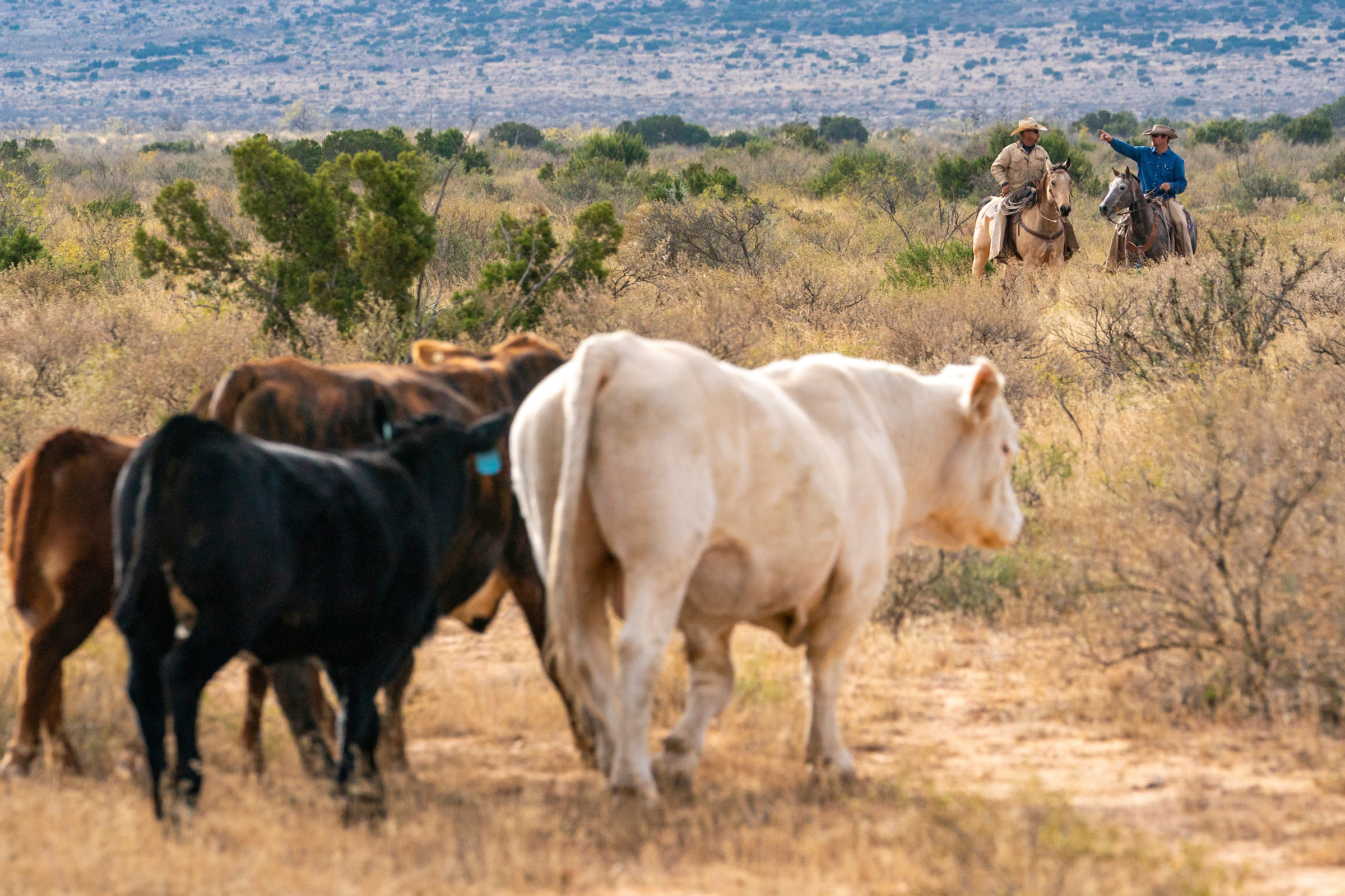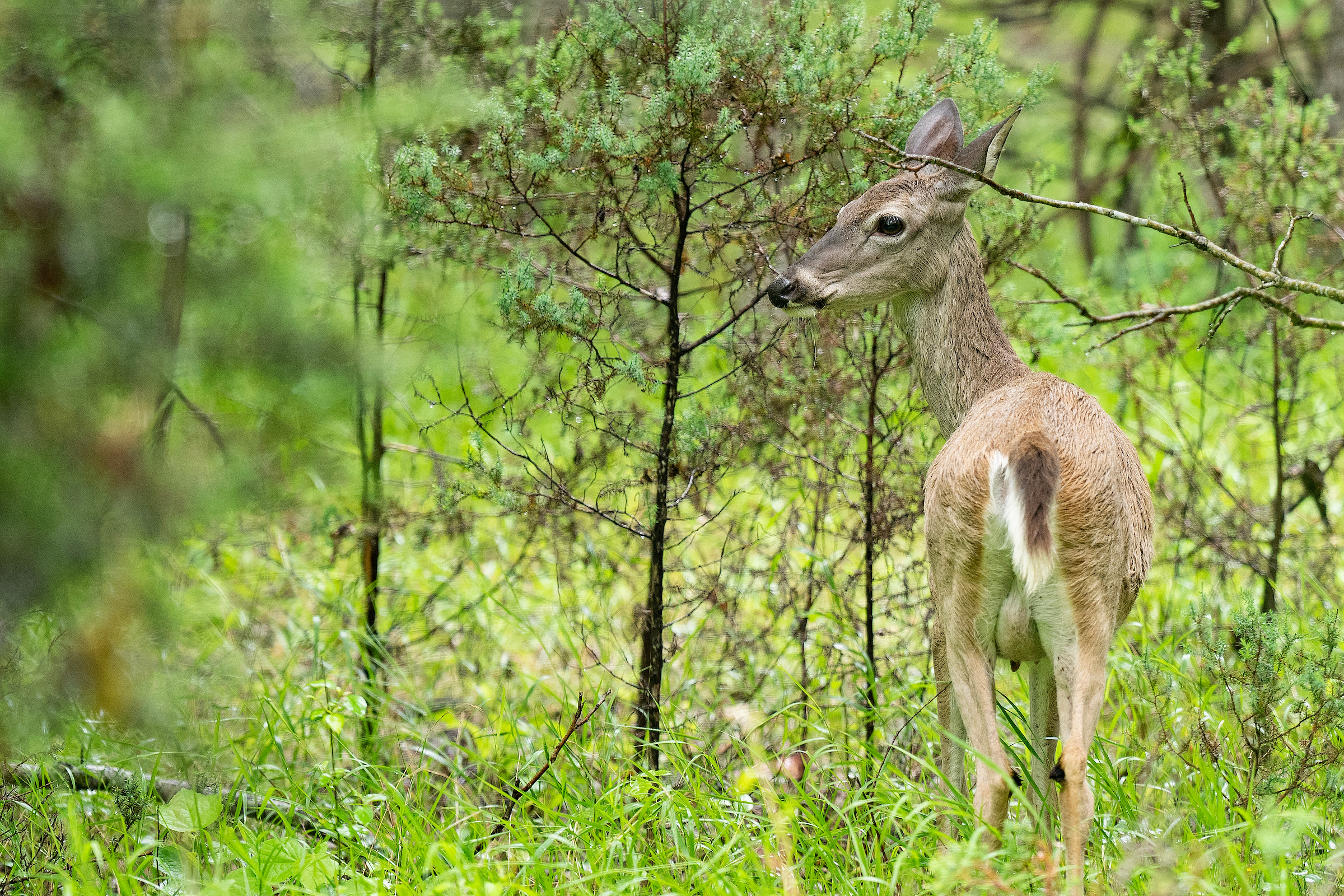Fighting woody plant encroachment with prescribed burns may be more effective than land managers previously thought.
A study by Bill Rogers, Ph.D., professor in the Texas A&M College of Agriculture and Life Sciences Department of Ecology and Conservation Biology, showed prescribed burns could be an effective tool for land managers to use against woody plants. The key is to use available vegetative fuel, like stockpiled grasses, and weather conditions to the burn’s advantage.
The recent study, “Exotic Herbivores and Fire Energy Drive Standing Herbaceous Biomass but do not Alter Compositional Patterns in the Semiarid Savanna Ecosystem,” was published in Applied Vegetation Science.

Timing, fuel load impact on prescribed burns
Rogers and his team studied the effectiveness of different “fire energies” for controlling resprouting woody plant species like juniper and mesquite and herbivores’ impact on potential fuel loads for prescribed burns. Fire energy refers to a fire’s burning intensity, including radiant energy released by flames.
The research was conducted at Texas A&M AgriLife Research Station in Sonora, located in a semi-arid savanna in southwest Texas.
Rogers said the amount of available fuel and timing of the burn greatly impacted the outcome when using fire to manage woody plants. His study showed that land managers should consider access by grazing animals, including cattle and non-native species like axis deer, as well as conditions like temperature, relative humidity and fuel moisture content when utilizing prescribed burns.
“There has been some doubt about fire’s ability as an effective tool once an ecosystem becomes encroached by woody shrubs and trees,” Rogers said. “But what we found is that hotter, drier conditions and the amount of available fuel heavily influences how effective a prescribed burn can be at reducing the density of these invasive woody plants.”
A new prescription for prescribed fire
Rogers said prescribed fire has been historically viewed as a poor option for land managers to clear junipers and mesquite once they are established in a location. Mechanical removal or chemical application seemed to be the most effective tools available despite the considerable cost associated with their implementation.
But Rogers said the traditional timing and conditions under which prescribed fires have been utilized has limited the ability to kill brushy plants. Traditionally, state and federal agencies have recommended setting fires under the “80-20-20 rule.” The rule suggests fires should not be set above 80 degrees, below 20% relative humidity and with winds exceeding 20 mph.
The 20-mph wind restriction makes good sense, because fires can escape containment under windy conditions, Rogers said. But the limitations on temperature and relative humidity have led most burns to occur at the least effective time, according to his study.
For more than a decade, students in Rogers’ lab began using “high energy” fire during summer drought when temperatures were over 100 degrees and plants had low moisture content. They found these high-intensity fires could kill non-sprouting juniper and achieved a significantly higher kill rate in mesquite, which can sprout back when left alive.
This led the U.S. Department of Agriculture National Resource Conservation Service to adjust some restrictions, and county commissioners in charge of burn bans began allowing land managers to set fires in more effective conditions.
“We started to see that setting fires in mild conditions is largely what led to their ineffectiveness,” Rogers said. “We set fires in these hotter, drier conditions with lower fuel moisture and started to see woody plant mortality and significant reductions in woody plant density.”




Experiments provide science for prescribed burns
Rogers said timing and weather conditions are very important, but fuel loads are also an important component to produce enough fire energy to kill woody plants. This will likely require land managers to restrict access by grazing animals to allow vegetation to grow and provide adequate vegetative fuel for the burn to reach higher energy levels.
His team set up 72 randomized 30 foot by 30 foot experimental plots at the Sonora station to identify various ranges of fuel and fire energy. Researchers restricted livestock, including goats, sheep and cattle, from grazing access ranging from zero, limited and full access.
Rogers noted factors that affected fuel loads within the experimental plots. For example, researchers were unable to completely restrict axis deer, which are invasive grazers, from the plots. He also noted how grass productivity factored into fuel buildup, whether from lack of soil moisture or in areas with rocky and/or marginal soils.
Researchers added fuel like hay and dried juniper in measured amounts to randomized plots before burns to simulate higher fuel loads than could be achieved before the experiment. The team used video and infrared video cameras stationed 40 feet in the air via a boom lift to capture each burn. Other instrumentation above and below ground was used to collect temperatures created by the fire.
“The infrared camera and instrumentation allowed us to track heat signatures and the fire’s energy throughout each burn, and that gave us a better understanding of the relationship between fuel loads, weather conditions and fire energy,” Rogers said. “We want to eventually be able to give a land manager our best recommendations to make prescribed fire most effective as a tool to control woody plants.”
Prescribed burns as a tool
There were other claims about prescribed fire that Rogers’ study also dispelled. While high-energy fires will kill woody plants, it does not negatively impact soils or native plants in these vegetative communities, including seed grasses.
The study showed high-energy fires did not “sterilize the soil” or seal the soil like clay in a kiln, he said. High-energy fires also did not disrupt soil microbiome communities or native plant recovery.
High-energy fires did not decrease the base plant community dynamics, he said. For instance, “bud banks” of grasses bounced back even better after the burn, and succulents like Bacchus recovered with no long-term negative impacts.
Rogers said he is focused on providing science-based solutions for landowners and land managers. He believes the study answered several foundational questions related to the efficacy and impact of prescribed burns.
“Science is showing that prescribed burns can be an important and beneficial tool for controlling invasive woody plants, improving ag production potential for farmers and ranchers and habitat for wildlife while also reducing fuel loads that could lead to catastrophic wildfires,” he said. “We hope this study can be part of that conversation.”





